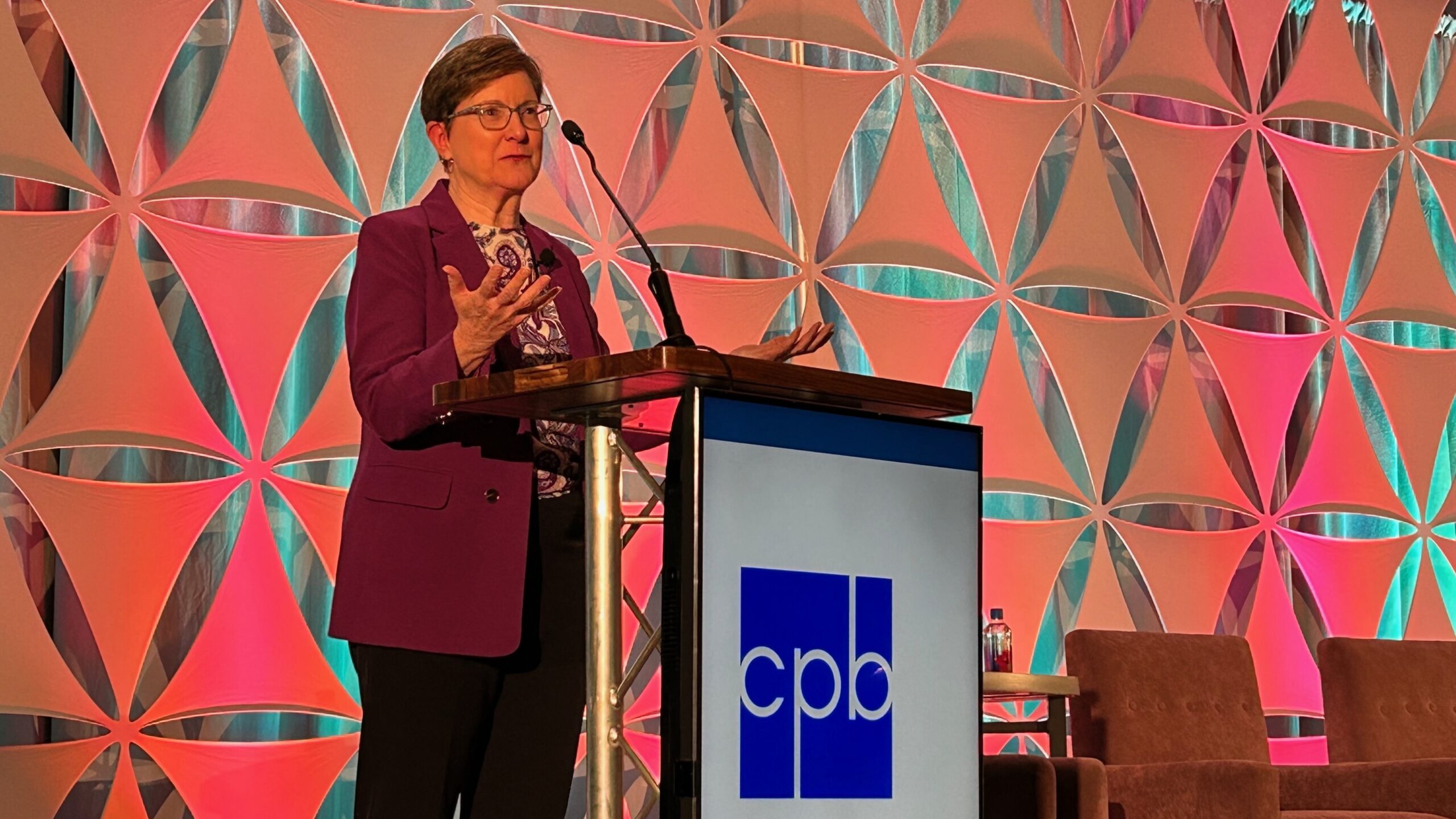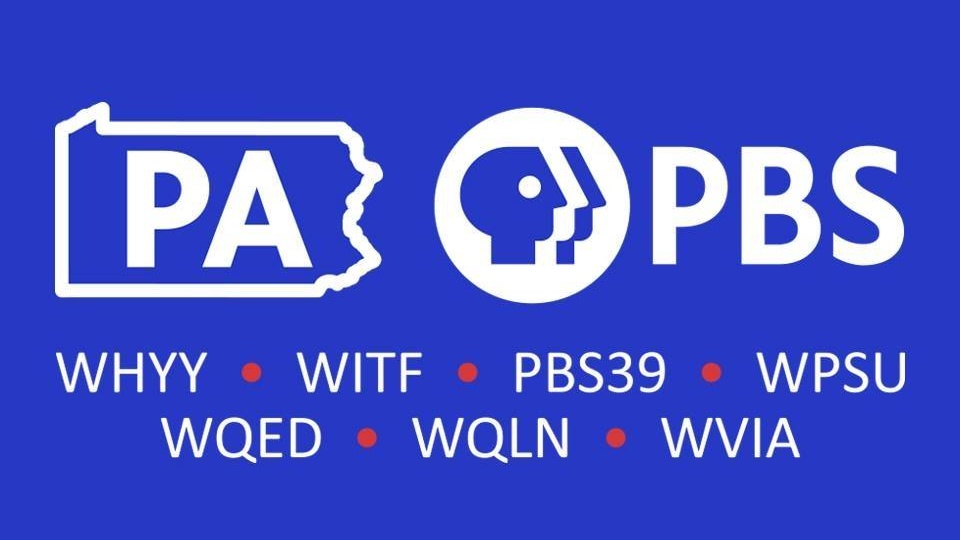Beyond Big Bird: What is public media’s value today?

Using Big Bird as a symbol of PBS's value is disingenuous and obscures legitimate questions of PBS's public service value and whether it deserves federal funding, Hirsch writes. (Illustration by Electronic Ink for Current)
Every time someone threatens to cut PBS’s funding (as Mitt Romney did in the Oct. 3 presidential debate), public television’s supporters play the Big Bird card. “Surely, Mr. Grinch, you won’t rob the children of their Big Bird?”
I’d like to call bull on that tactic. Using Big Bird as a symbol of PBS’s value is disingenuous and obscures the legitimate questions of (a) whether PBS is essential and (b) whether it should be federally funded.
I worked for PBS for more than six years and have in fact spent most of my career working to raise the visibility and impact of public media online. So, I’m in the pro–public-media camp.

Using Big Bird as a symbol of PBS’s value is disingenuous and obscures legitimate questions of PBS’s public service value and whether it deserves federal funding, Hirsch writes. (Illustration by Electronic Ink for Current)
But Big Bird is a red herring. He’s not an apt symbol of PBS, a network that is also home to Downton Abbey and the NewsHour, This Old House and, yes, doo-wop shows at pledge time (not to mention the infomercials for wrinkle cream that some stations air). If you think of PBS as a variety show, Big Bird only represents only one act.
We may need Big Bird, but do we need PBS? Do we need the variety show?
Ken Burns says “Yes.” In a recent op-ed published in USA Today, titled “Romney’s war on public TV is a loss for USA,” he wrote:
“In an increasingly difficult world to navigate, with multiple media outlets and a constant onslaught of viewpoints, PBS remains our shared space, one where we can experience the best in arts and education, public affairs, history, science and journalism. It is a place where we can all feel at home.”
I don’t think so. While PBS is definitely valued by millions of Americans, it’s a stretch to call it a shared space (for example, don’t people typically interact inside a shared space? Otherwise, what makes it shared?). And the problem for PBS, trying to make its case to Congress and funders and the public, is that while it’s valued by millions of Americans, different people value it for different reasons.
For some people, PBS is Big Bird, and more generally, a safe haven for children (I personally think PBS Kids is a national treasure). For others, PBS is about cooking shows, investigative journalism presented on Frontline, history discovered through collectibles on Antiques Roadshow, or the independent films of POV and Independent Lens. The aesthetic, audience and mission of PBS shows are all over the map, and it’s not clear, to me, what knits them together. What’s the common value proposition?
Public media’s true value
The collective value proposition of public media more generally, of course, is that it’s produced as a public service. It’s noncommercial, treating viewers/listeners/users as citizens, not consumers. Yes, the underwriting spots on PBS and NPR today are often indistinguishable from commercials; and yes, there’s plain-old advertising on PBS.org.
These are unfortunate developments, but also understandable as these enterprises struggle to stay competitive in a fast-changing media landscape, where users don’t expect less of them just because they have less money than their commercial counterparts.
I personally trust that the people who make content for public media generally do so because they are moved to educate, inspire, inform — to help people, and serve them, not to sell them something. If they’re selling anything, it’s ideas, and I trust that great care is taken to make sure a diverse array of ideas are on display.
But I also know that there’s no shortage of ego in public media — a lot of content producers and editors who think they know best. Many of them are superlative at what they do and have Peabody Awards and the like to prove it. But ego can lead to insularity — over-confidence that the way you’re doing things is the only way, the best way. And then when your detractors call for your demise, you are more likely to be defensive than to consider anew what it is that truly defines your value.
Who decides?
When every year seems to bring a new round of threats to public media funding, it’s clear to me that public media isn’t doing a very good job of asserting its value. Maybe its detractors have more money and better lobbyists, but clearly the “Save Big Bird” tactic is only a Band-Aid, and one that’s getting worn out from overuse.
Collectively, public media has a huge megaphone, and a tremendous amount of intelligence, both about media-making and about meaningfully engaging the public in compelling and respectful ways. It’s time to harness these resources and facilitate an ongoing, online discussion about what public media should look like in 2012, whether it should be federally funded, and how it should best remain accountable to the public it serves.
To me, the strongest argument for federally funded public media is that Americans who can’t afford cable television and who don’t have Internet access should be able to access quality news and information. (Of course, the government should also make sure everyone has Internet access.) Sure, people may prefer to watch The Biggest Loser, but if they want trustworthy journalism, they should have it. Information is power, and if we want to call ourselves the greatest democracy in the world, we need to empower our citizens with information they can trust.
But as I’ve illustrated above, PBS isn’t just trustworthy news. It’s also British dramas, nature shows, cooking shows, pledge specials and so much more. Is all of this content essential to democracy? That’s the million-dollar question.
Who gets to decide what media the American public needs? Programming executives at PBS and NPR? Private funders at corporations and foundations? (After all, if a great documentary that programming execs want to air never gets the funding it needs, it may never see the light of day.)
The local/national wrinkle
The great strength and great weakness of public media lie in the fact that what you or I experience as “PBS” or “NPR” relies entirely on what our local station chooses to air. For example, POV is an incredible independent film series that PBS distributes; last time I checked, many stations air it at 11 p.m. or later, in some cases because they’re afraid of the political ramifications of airing a documentary that addresses challenging social issues in often provocative ways. So if someone in Idaho argues to save or kill PBS, they’re arguing for something entirely different than someone who watches PBS in Florida, or Michigan, or New York.
Given the local/national structure of public television and radio, decision-making about public media programming is in fact very distributed, but that doesn’t necessarily make it democratic or responsive to the public it serves. It just means that a lot of programmers are making disparate decisions without necessarily having accountability to their local communities.
The fact is, in 2012, media is nothing like it was in the ’60s, when public broadcasting was founded. Back then, there were a few channels, and it made sense that there would be only a few gatekeepers. But today, anyone with Internet access can be a media maker. The floodgates are open, so the role of the gatekeeper needs to evolve.
In 2012, the public-media ecosystem is complex, comprising not just PBS but also NPR, local stations, independent producers — and, some would argue, public access channels, nonprofit news start-ups, citizen journalism and more. Today, anyone can be a media maker, launching a blog, podcast or Twitter feed. Executives in board rooms shouldn’t be the only ones with a say in what makes it to the airwaves — there should be more accountability, transparency and responsiveness in order for public-media content to truly meet the needs of diverse Americans.
Affordability isn’t the issue
As Ken Burns pointed out, PBS represents something like 1/100th of 1 percent of the federal budget. Or, as astrophysicist Neil deGrasse Tyson tweeted (and was retweeted 62,000+ times):
Cutting PBS support (0.012% of budget) to help balance the Federal budget is like deleting text files to make room on your 500Gig hard drive
— Neil deGrasse Tyson (@neiltyson) October 4, 2012
Cutting PBS is not a smart or meaningful way to improve the economic outlook of this country. But that doesn’t mean the government should necessarily fund PBS. Just because something is affordable doesn’t mean it’s necessary.
What do you think?
What is public media’s true public service value, and are we delivering and communicating that value as effectively as possible? How is our value proposition different today than it was in the ’60s? Can we truly make the case that federal funding for public media is essential in 2012? Weigh in online or send a letter to the editor to karen@current.org.
Amanda Hirsch, the former editorial director of PBS.org, edits MediaShift’s Collaboration Central, a website about collaboration in the digital age. She lives in Brooklyn, N.Y., and blogs at amandahirsch.com. This commentary was originally published by MediaShift, the PBS.org website tracking how new media is changing society and culture, also found Twitter and Facebook.






